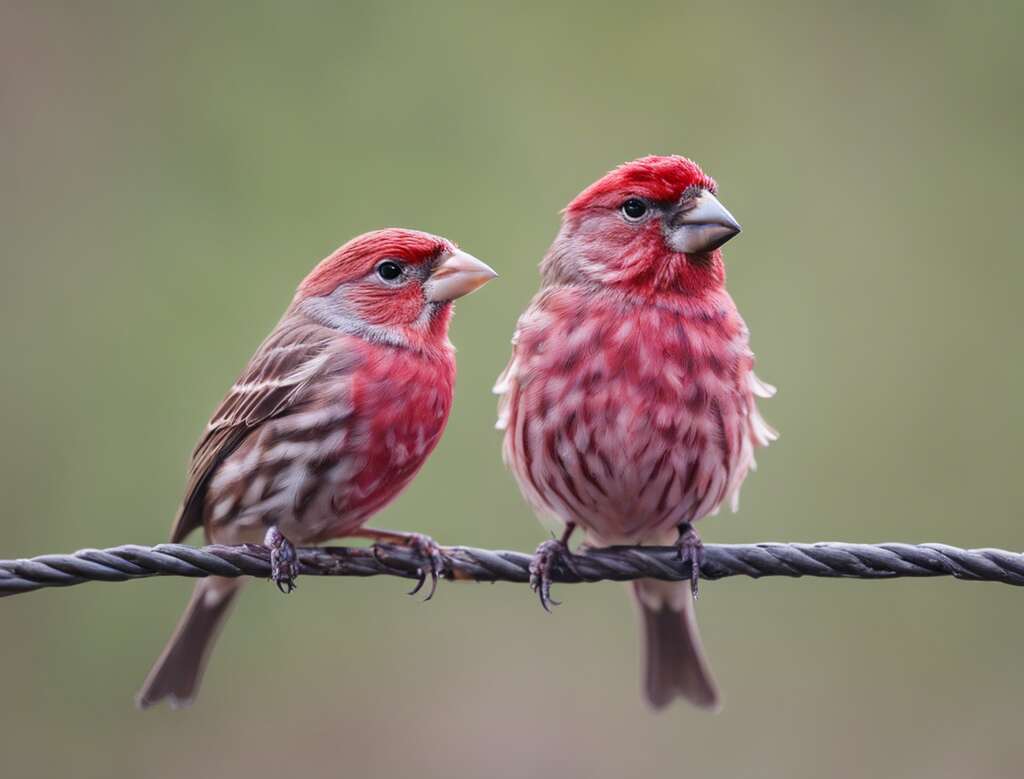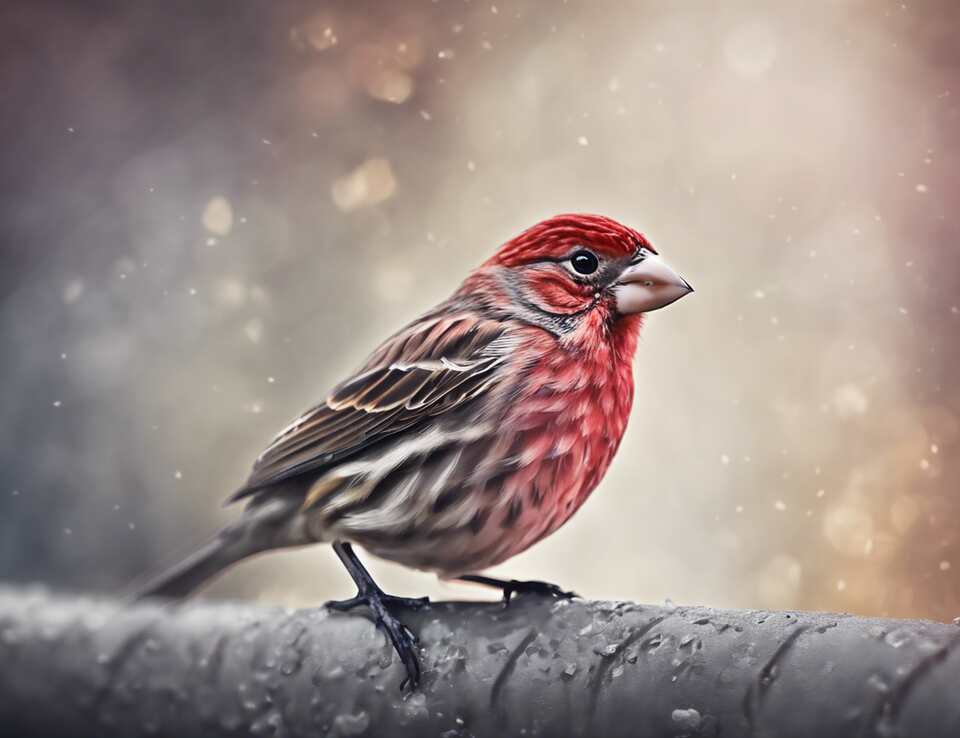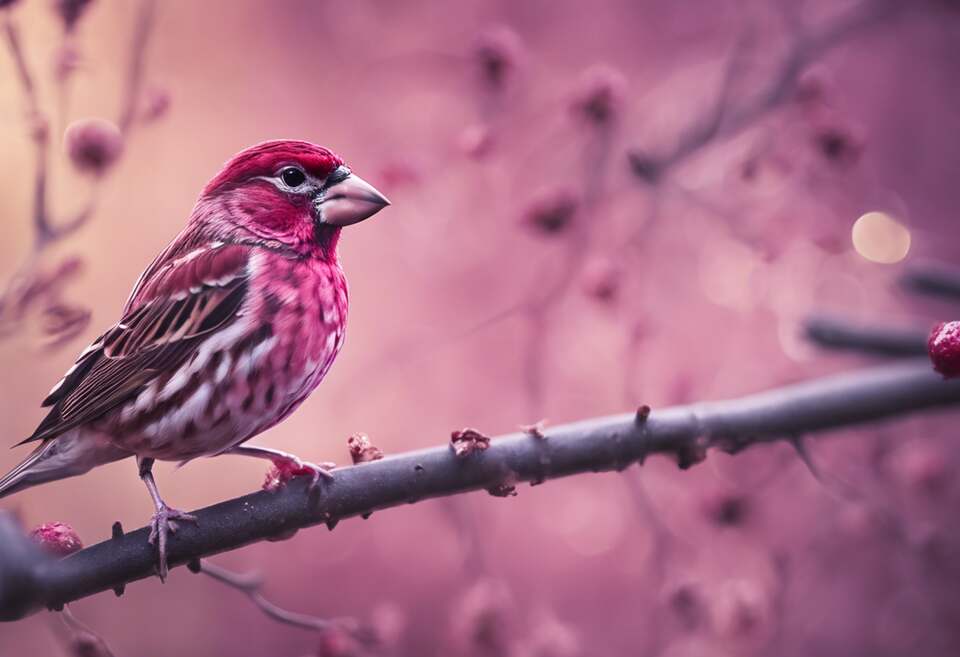House Finch and Purple Finch are two commonly confused bird species, but with a trained eye, their physical differences are noticeable. Whether you are an avid bird watcher or simply enjoy observing nature, being able to distinguish between these two finches can enhance your birdwatching experience. Let’s delve into the key physical disparities that set House Finches and Purple Finches apart.
Table of Contents
Identifying Physical Differences Between House Finch and Purple Finch
Size and Shape
One of the primary ways to differentiate House Finches from Purple Finches is by observing their size and shape. House Finches are slightly smaller in size compared to Purple Finches. Additionally, House Finches have a more slender body shape, while Purple Finches appear to have a stockier build.
| Characteristic | House Finch | Purple Finch |
|---|---|---|
| Size | Approximately 5-6 inches (12-15 cm) | Approximately 6-7 inches (15-18 cm) |
| Body Shape | Slender | Stockier |
Coloration
Coloration is often a crucial factor in distinguishing between bird species. House Finches have a predominantly brown and gray plumage with streaks on their undersides. In contrast, Purple Finches exhibit more vibrant colors, including a reddish-purple hue on their heads and breasts, which is significantly more pronounced in males during the breeding season.
Yes, you’re correct. House Finches do indeed have reddish hues, particularly in their males. Here’s the corrected table:
| Characteristic | House Finch | Purple Finch |
|---|---|---|
| Plumage Color | Predominantly brown and gray with streaks, males have reddish hues | Vibrant colors, including reddish-purple hues |
| Head and Breast Color | Brown with streaks, males have reddish hues | Reddish-purple hue, more pronounced in males during breeding season |
Facial Features
Examining the facial characteristics of these finches can also aid in identification. House Finches have a distinctive pattern around their eyes, with a well-defined stripe that runs behind each eye. On the other hand, Purple Finches have a bolder facial pattern, with a whitish eyebrow stripe and a more pronounced facial contrast, especially in males.
Beak Shape
Another noticeable contrast between House Finches and Purple Finches lies in their beak shape. House Finches possess a short, conical beak suitable for cracking seeds. In comparison, Purple Finches boast a slightly larger beak that is curved, enabling them to extract seeds from cones and other tight spots with ease.
Vocalizations
While visual cues are essential for identification, paying attention to the bird’s vocalizations can also be informative. House Finches are known for their lively, musical warbles and chirps. In contrast, Purple Finches have a distinctive, melodious song that stands out in wooded areas where they are commonly found.
Habitat and Range
Understanding the typical habitats and ranges of House Finches and Purple Finches can further aid in distinguishing between the two species. House Finches are often found in urban and suburban areas, frequenting bird feeders and gardens. Purple Finches, on the other hand, prefer coniferous and mixed forests, where their rich, warbling songs can be heard.
While House Finches and Purple Finches share some similarities, particularly in their feeding habits and behavior, several key physical characteristics can help bird enthusiasts differentiate between these two finch species. By paying attention to size, coloration, facial features, beak shape, vocalizations, and habitat preferences, observers can enhance their birdwatching skills and appreciate the unique beauty of each avian visitor.
Contrasting Behavioral Traits of House Finch Versus Purple Finch
In the world of birdwatching, distinguishing between similar bird species can be challenging, especially when it comes to the House Finch and the Purple Finch. While these two finches may share some physical similarities, they exhibit contrasting behavioral traits that set them apart. Understanding these differences can enhance your birdwatching experience and deepen your appreciation for these beautiful creatures.
House Finch: The Social Bird
The House Finch is known for its sociable nature, often found in large groups around residential areas, parks, and bird feeders. These finches are comfortable around humans and can be easily spotted chirping melodiously in urban and suburban settings. House Finches are opportunistic feeders, enjoying a variety of seeds, fruits, and small insects. Their adaptability to different environments has made them a common sight across North America.
Purple Finch: The Shy Songbird
In contrast, the Purple Finch is a more elusive bird with a shy demeanor. These finches prefer wooded areas with dense vegetation, where they can hide and forage for food away from prying eyes. The Purple Finch’s distinctive raspberry-red plumage allows it to blend seamlessly with the forest foliage, providing excellent camouflage from predators. Unlike the gregarious House Finch, Purple Finches are typically seen in pairs or small family groups.
Feeding Behavior: Seeds vs. Insects
One of the significant differences between House Finches and Purple Finches lies in their feeding habits. House Finches have a preference for seeds and fruits, often visiting bird feeders in search of easy meals. In contrast, Purple Finches have a more varied diet, including a significant portion of insects and spiders in addition to seeds and berries. This dietary contrast is reflective of their respective habitats and foraging strategies.
Vocalizations: Chatter vs. Song
When it comes to vocalizations, House Finches are known for their cheerful and melodious chatter. These sociable birds communicate through a series of vibrant chirps and warbles, especially during the breeding season. On the other hand, Purple Finches are celebrated for their sweet, musical songs. The male Purple Finch’s song is a delightful mix of warbles and whistles, often performed to attract a mate or establish territory.
Breeding Behavior: Nesting Preferences
House Finches and Purple Finches also differ in their nesting habits. House Finches are cavity nesters, known for utilizing man-made structures such as vents, ledges, and hanging plants to build their nests. In contrast, Purple Finches prefer to nest in coniferous trees, using twigs, grasses, and moss to construct their cup-shaped nests. These nesting preferences align with their respective habitats and comfort levels.
While House Finches and Purple Finches may share certain physical characteristics, their behavioral traits set them apart in the avian world. By observing their feeding behaviors, vocalizations, and nesting preferences, birdwatchers can develop a deeper appreciation for these unique finches and the diverse roles they play in their ecosystems.
Conclusion
Understanding the variances between House Finches and Purple Finches involves both physical attributes and behavioral characteristics. By recognizing the distinctive features such as coloration, size, and beak shape, bird enthusiasts can accurately identify these two species. The House Finch’s brown streaks, notched tail, and slightly larger size set it apart from the Purple Finch’s raspberry hue, more pronounced stripes, and smaller build. Additionally, observing their behaviors can help differentiate between the species, with House Finches displaying more adaptability to human environments and Purple Finches often being more elusive and territorial.
When it comes to feeding habits, the House Finch’s preference for seeds and grains contrasts with the Purple Finch’s inclination towards insects and fruits. Based on these dietary disparities, birdwatchers can attract specific species by providing suitable food sources in their gardens or bird feeders. Furthermore, the melodious songs of the Purple Finch stand out compared to the more vocal and chattering nature of House Finches, adding an auditory dimension to the distinction between these two birds.
In terms of nesting behaviors, House Finches tend to make use of various nesting sites, including ledges, gutters, and hanging plants, displaying adaptability and versatility in their choice of locations. Conversely, Purple Finches exhibit more selectivity when it comes to nesting, opting for coniferous trees and dense shrubbery. By observing nesting preferences, bird enthusiasts can gain insight into the nesting habits of these finches and create suitable habitats to attract them.
Moreover, the social dynamics of House Finches and Purple Finches differ significantly. House Finches are known for their gregarious nature, often congregating in large flocks and engaging in communal activities, whereas Purple Finches are more solitary and territorial, preferring to establish their own space and defend it vigorously. Understanding these social dynamics can provide valuable insights into the behavior patterns of these two species and enhance the birdwatching experience.
The distinctive characteristics and behaviors of House Finches and Purple Finches make them fascinating subjects for observation and study. By familiarizing oneself with the physical traits, feeding preferences, nesting behaviors, and social interactions of these two finch species, bird enthusiasts can deepen their appreciation for the diverse avian life around them.
Whether it is the vibrant plumage of the Purple Finch or the adaptable nature of the House Finch, each species brings a unique essence to the world of birdwatching, enriching our understanding of the natural world and the intricate web of life in which we are all connected.




